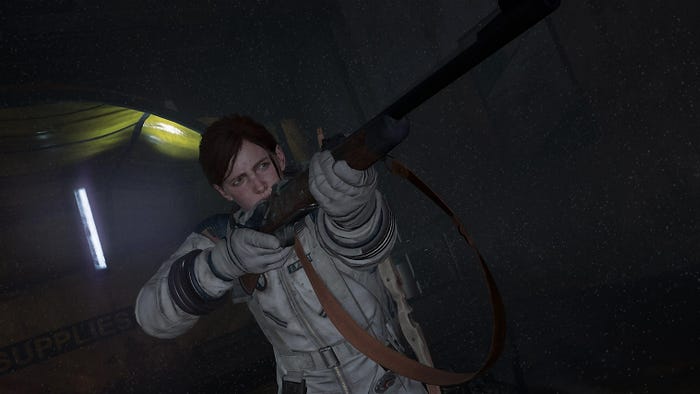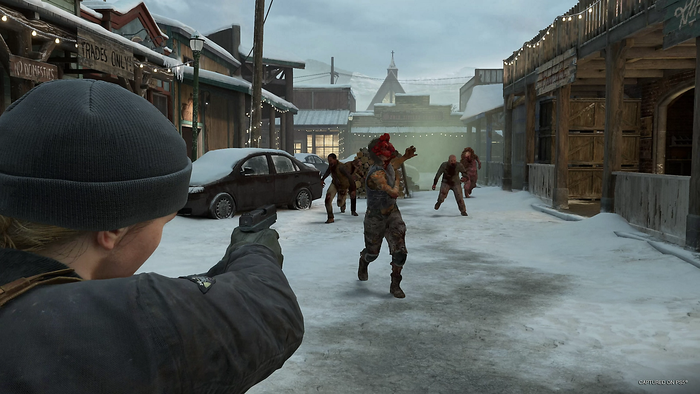The Last of Us Part II's new roguelike mode let its combat designers go wild
The Last of Us Part II Remastered's game mode No Return let Naughty Dog show off the true power of its combat and AI systems.

At a Glance
- A roguelike mode for The Last of Us allowed its developers to maximize the main game's combat and AI systems.
- Game modes like this can inspire devs used to working under tight constraints.
The Last of Us Part II Remastered game director Matthew Gallant has been working on The Last of Us franchise for a long time. As a lead systems designer on the original PS4 title (and a game designer on The Last of Us) , he's one of the developers who was forced to master the series' combat through sheer repetition. Put him into any combat scenario in the main campaign and he'll plow through it like a version of John Wick who knows where every enemy thug will come from.
He usually doesn't get to feel the same tension and fear of death the series is meant to evoke. So it was to his surprise while playtesting The Last of Us Part II Remastered's roguelike-inspired game mode "No Return" that for the first time in a long, long time, he felt completely off guard while fending off waves of enemies.
It was during a section of his run where the game spawned enemies that would drop a pipe bomb immediately after dying. "That's a fun complication—you have to attack and then back out to get away from the explosion," Gallant said. But there was another twist on this level: an AI-powered ally was following Gallant around. "All of a sudden my ally got a kill and that dropped a pipe bomb and I went 'oh shit, I need to react to my ally getting kills too!'"
It's a small moment with so much potential: in a moment where studios are scrambling to improve the economic potential of expensive games, finding new opportunities to empower game designers like this may deliver a much-needed bang for buck in the years ahead.
Naughty Dog is reviving an older way of packaging games
Industry veterans may see something familiar in No Return. In years past, games of all shapes and sizes would ship with a main campaign and then various forms of additional game modes that reused combat mechanics in less-confined environments.
First it was local multiplayer modes, then online multiplayer, and along the way there were horde modes, challenge modes, daily trials, etc. But ever-ballooning costs of game development have warped the incentives of developing such features. Lately when said game modes show up in a single-player title, they're liable to be wrapped up in features designed to expand retention or drive recurring spending.
No Return (and God of War: Ragnarok's roguelike-inspired "Valhalla" game mode from Naughty Dog sibling studio Sony Santa Monica) feel like a throwback to an older time. It's tempting to focus on the fact that neither game mode has any recurrent spending incentives built in, but let's double back to another business advantage these modes offer: the ability to maximize the investment poured into raw gameplay.

Gallant shared some relevant examples: many players who play through the campaign of The Last of Us Part II will fall back to tactics that fit their playstyle. If they fall in love with the bow, they'll fully invest in upgrades and stick strictly to that weapon, only switching arms in the event of an emergency. Players who use Molotov cocktails to solve (and create) problems will stick to their explosive strategy, and players who've invested deeply in stealth upgrades will make less use of weapons altogether.
That's not how combat works in No Return. The game mode features a slew of playable characters beyond Ellie and Abby, the protagonists of the main story. Each character starts with a different weapon and specializes in the playstyles that weapon most offers.
But. Once players dive into a run, they have no choice but to explore other combat options to make it to the boss. Limited weapon choices and evolving challenges will drive the stealth-focused players to grab a rifle, bow players to get into close range, and Molotov cocktail players to...uh, experimenting with the other explosives the game has to offer.
"It's going to take players who saw The Last of Us as having this one-dimensional combat and seeing there was this whole range of things you could have [played]," Gallant said. "And now we're giving you systems that will push you to do that."
Keeping players on their toes in No Return
As players progress in No Return, they unlock new game modes and enemy types that are injected into each run (Naughty Dog also makes these elements fully customizable—I was thankful to find I could turn off the need to kill dogs every run). Gallant said these were inspired by the "renaissance" of roguelike games hitting the market in the last five years, and that No Return allowed make the most of the genre's "flexible" structure.
Players stuck on an encounter in The Last of Us Part II's main story may see the tension of the fight fade for two reasons: either they lean on a recently-accomplished checkpoint to be assured they won't lose much progress, or dying and respawning in a section repeatedly makes the action go from tense to repetitive. In No Return, there are no checkpoints to fall back on, and the constant addition of challenges "soothes the pain of dying," as Gallant said.
The additional challenges go well outside the "canon" of what's possible in the world of The Last of Us. There's the aforementioned "pipe bombs on death" feature that would require elaborate justification in the main game mode, Infected enemies roaming the streets of Jackson (an environment in the main game that's only used for a non-combat level), as well as sped-up enemies, limited-time capture-the-point game modes.

Gallant also dropped one surprise on me as someone who spent hours playing No Return before our chat—each time an environment loads, it may tweak the geometry of the space itself. Players used to how the zones are structured in the campaign will already be dealing with changes that optimize it for No Return, but they'll be further surprised when the game tweaks the layout to block off or open up some areas.
So if you think a certain route in the zone is a safe space to get away from a Clicker—you may be in for a rude surprise. It's a deep toolbox of options players would never see in the main game.
Gallant wasn't quite willing to describe if this made combat "easier" or "harder" than story-driven encounters in the campaign, but he said it changed the context of how the team iterated on scenarios. "If we're making the main story and a story beat isn't working, you can't just drop that [beat]," he explained. "There's something in the larger structure that means it needs to be there and it needs to happen."
"If it isn't working, you rev, and you rev, and you try, and you try, and through force of iteration and design attempts, you find a way to make it work. By contrast if we were putting a mechanic in No Return, if we were trying out some combination of things and it just wasn't working, we had the luxury of being able to drop it."
Gallant credited the dynamic, in-engine acting AI system created for The Last of Us Part II as being a key driver of No Return's success, partly because the AI would need to be tweaked from map to map for optimal performance. "If you just tried to take a wave that you put into the Hillcrest level—which is really big—and put them into an office building that's really tight, it wouldn't work," he said.
There's another interesting layer to the AI implementation: if an area in the main story is filled with Infected enemies, not human ones, the human AI may not know how to optimally navigate the space when dropped in. AI designers may already recognize that if the game's AI were prebaked, it would be a nightmare to get them into a zone they weren't designed for.
"Because our AI is so robustly designed, that was a part of the reason this mode was possible," he said. "We could put a WLF soldier in a layout designed for Infected and it would just work."
Roguelikes can light a fire under game designers of all stripes
When Sony Santa Monica unveiled its Valhalla game mode during the 2023 Game Awards, I said out loud "if I had a nickel for every time a Santa Monica-based PlayStation studio revealed a roguelike game mode for a critically-acclaimed single-player game, I'd have two nickels, which isn't a lot but it's weird that it happened twice."
So did Naughty Dog and Sony Santa Monica collaborate on their roguelike modes? "No, we did not," said Gallant. But he does regularly chat with his peers at the God of War studio and his own playtime with Valhalla made him think about why both studios went all-in on the roguelike model.
"It doesn't surprise me that combat designers and designers in general find [roguelikes] a fascinating space to try out and experiment with their own take on it," he observed. "It resonates so much with game developers...we're all interested in adding excitement to combat, and we want to throw challenges at the player that surprise them and put them on their feet."
It's funny that Gallant said "players" here, because you might swap in the word "developers" and it would still resonate. His earlier recounting of a moment where No Return surprised him in a way that The Last of Us Part II didn't speaks to how these game modes can be exciting for the people making them.
It's a thrill when developers can go off-leash and show the possibilities of what they've made. Mix that thrill in with how No Return expands Naughty Dog's investment in the combat and AI of The Last of Us Part II, and you have a compelling case for why more studios may cook up modes like this in the years ahead.
About the Author
You May Also Like









